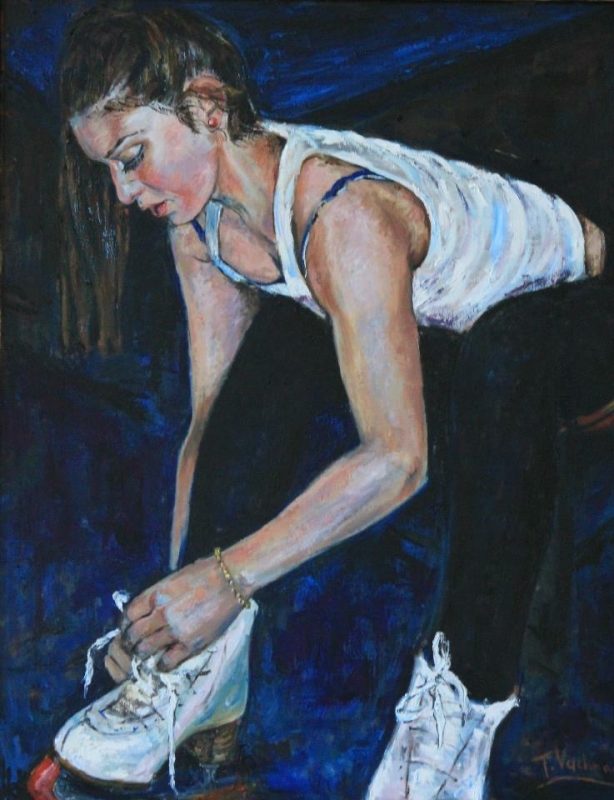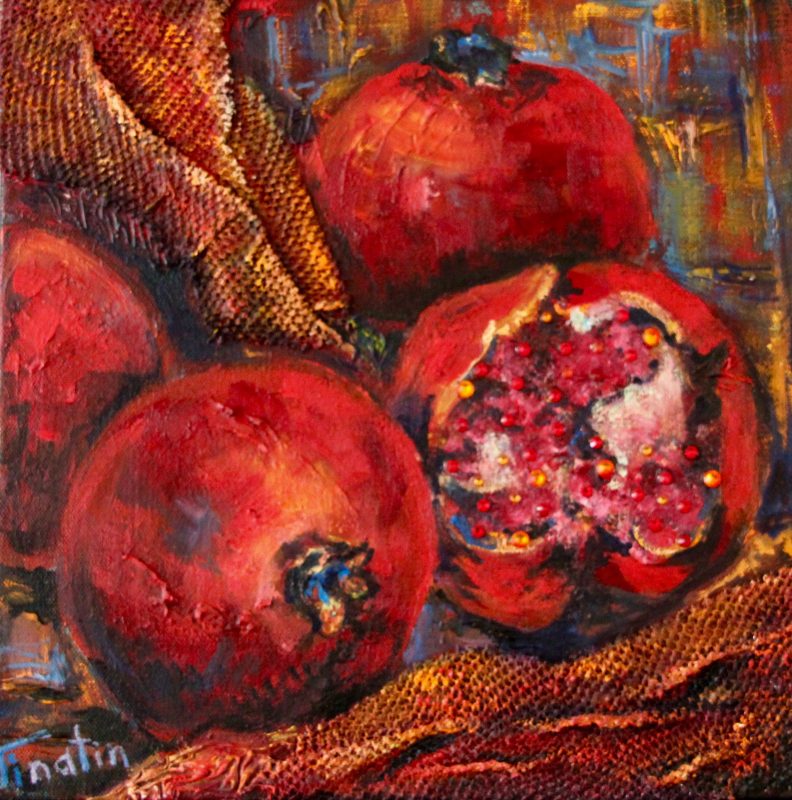Our blog continues series of interviews with successful creative people, sensitively perceiving the aesthetic component of our life. We met Tina Vachnadze before, but thanks to this interview, we had an opportunity to get deeper into Tina as a creative person, artist and designer, talk about her roots, education and career.

Tell us about your roots and unusual creative family (mother – an outstanding pianist, grandfather and grandmother – famous painters).
I was born in an artistic family. My grandmother, grandfather and father are painters, and mother Marina Khvitia is a pianist. Basically, I grew up in the workshop of my grandfather Mikhail Khvitia. Famous Georgian artists, directors, actors – I grew up among them, in a bohemian environment.
Was it easy for you to grow up surrounded by talent?
Mom was always at concerts in Moscow, and I lived between Tbilisi and Moscow. It’s not easy when mom is not home all the time. As a child, I wanted to be like everyone else – walk in the yard, play with kids, but it was impossible to be like everyone. My grandmother was very active, so every day I went to a concert or an exhibition. When I was a teenager I stopped wanting to be like everyone else. I realized that everything that happened to me made me what I am.
I lived in a house where artists lived. Everyone around me was creating something. I did not know that it’s possible to live in any other way. From early childhood painting and drawing was very natural for me.
What was the impetus to the choice of the artist’s profession and why you decided to chose fashion design faculty at the Academy of Arts?
I began to draw when I was very young and everyone around said that it was wonderful. The first thing I painted and everyone gasped – it was a portrait of my first teacher. Everyone was surprised how a six-year-old can paint that. I did not think to become an artist, I just drew. I wanted to become an actress.
By the time I had to pick a profession, my relatives told me that I’m already an artist, so I should go and study art. And I thought, well, I’ll go, then later I’ll study to be an actress. And everything was very easy for me in my studies.
I chose the faculty of design and modelling at the Academy of Fine Arts in Tbilisi. In the Academy we were taught everything that artists usually learn and, besides, the designer’s specialty. Therefore, when I came to America and gave my diploma for evaluation and I received two diplomas – as a designer and as an artist.
I chose the Faculty of Fashion design, because at that age I liked fashion very much, besides, my grandmother did great sewing, she created amazing dresses for my mother concerts! They were so beautiful that just I wanted to do the same beauty. In addition, this faculty was very prestigious back then. Beautiful girls were doing fashion. The studies were very interesting.
For me fashion and painting are very similar concepts. Fashion is an art.

You have different talents and abilities, you were a fashion illustrator, a fashion designer and a painter, however you chose the profession of the artist, why?
All my ideas come to me when I’m drawing. They do not first come to my mind, and only then I sketch them. I think with my fingers when I draw. That’s why I feel more like an artist.

You got a classical education in figurative art, but switched to abstract works, how did you come to this?
It was a very difficult process. After so many years of classical painting, it’s very difficult to move to abstraction. For people who never painted it seems like it is very easy. They paint something and they think it’s an abstraction. But they do not draw anything similar to it. It is difficult to forget everything that you were taught and switch to abstraction. If you look at my works, you can see that the transition period was long. I set this goal for myself, because abstract art was interesting to me. I was interested to convey my feelings without form. I can not say that I completely forgot about the figurative art, just now I’m interested in doing an abstraction. It’s difficult and interesting, it’s a challenge.
Picasso said, “It took me four years to paint like Raphael, but a life time to paint like a child.” This is so true.

Did moving to America affect your work and how does the US public react to your work? For example to your exhibition in Manhattan?
America influenced me and influenced my artistic perception. I always had a wide horizon, I traveled a lot. But in America I began to see more contemporary art, I learned new things. It all affected my work. I first lived in Atlanta, then moved to New York. Those cities are very different. And New York influenced me very much. The energy of the city itself has changed me. I began to feel myself a more free person, more free in art.
Americans like everything new, everything unusual. They liked my work. Exhibitions in New York were warmly received by public. My abstract works are usually perceived worse by people from the former Soviet Union. Americans are open to everything new.
How do you see contemporary art and are there any criteria for what is the art?
I believe there always was art and it will always exist. It’s just very difficult to understand modern art, because modern art is very easy to fake. There are a lot of deceivers in contemporary art. I have only one criteria for art – emotional perception. Art touches. The artist can convey the emotional state through a still life, through a portrait, through abstraction – it does not matter. If the heart is compressed, goosebumps run – this is art. In pictures there must be soul.

How do you feel about this situation: a person likes the painting, but it does not fit into the interior, and a person does not buy the painting.
I understand this situation. This is due to the fact that people do not trust their own taste. They hire a designer, and designer decides what is right and what is not. Nowadays, 90 percent of art is bought for interior decoration. Interior designers do business like this. They earn money by giving advice on buying stuff. Gradually people lose ability to think independently, to make an independent choice.
I think that if you liked the painting you should buy it and build your interior around it.
Your favorite artists and what exactly makes the greatest impression on you?
My favorite artists are Van Gogh and my grandfather. These two people influenced me the most. I understand them and love them.
I do not have a favourite genre of art. There are some favourite artists and paintings. But for me the main thing is my inner spirit, and I can go to a museum for only one painting. Today it can be a landscape, and tomorrow something else. When the painting is powerful, it’s enough for one visit.
Finally, your advice to our readers.
I consider it very important for all people to develop themselves, read books, go to museums, go to cinema and theatre. The more people see, the more they feel.